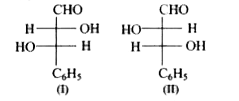Which of the following set is having correct statements here regarding both B and Al?
1. They react with HCl to form chlorides
2. Both boron and aluminium react with nitrogen.
3. They burn in oxygen to give oxides at high temperature
4. Their halides are Lewis acids
1, 4
3, 4
2, 3, 4
1, 2, 3, 4
The correct Answer is:C
To determine which statements are correct regarding both boron (B) and aluminum (Al), we will analyze each statement one by one.
1. Statement 1: They react with HCl to form chlorides.
- Analysis: Boron does not react with hydrochloric acid (HCl), even when boiling. In contrast, aluminum reacts with HCl to produce aluminum chloride (AlCl3) and liberates hydrogen gas. Therefore, this statement is incorrect.
2. Statement 2: Both boron and aluminum react with nitrogen.
- Analysis: Both boron and aluminum do react with nitrogen. Boron reacts with nitrogen to form boron nitride (BN), and aluminum reacts with nitrogen to form aluminum nitride (AlN). Hence, this statement is correct.
3. Statement 3: They burn in oxygen to give oxides at high temperature.
- Analysis: Both elements can burn in oxygen. Boron burns to form boron trioxide (B2O3), and aluminum burns to form aluminum oxide (Al2O3). Therefore, this statement is also correct.
4. Statement 4: Their halides are Lewis acids.
- Analysis: The halides of both boron (BX3) and aluminum (AlX3) are electron-deficient and can accept electrons, making them Lewis acids. Thus, this statement is correct.
Summary of Findings:
- Statement 1: Incorrect
- Statement 2: Correct
- Statement 3: Correct
- Statement 4: Correct
Conclusion:
The correct statements regarding both boron and aluminum are 2, 3, and 4. Therefore, the answer is that the set containing statements 2, 3, and 4 is correct.
---
- Analysis: Boron does not react with hydrochloric acid (HCl), even when boiling. In contrast, aluminum reacts with HCl to produce aluminum chloride (AlCl3) and liberates hydrogen gas. Therefore, this statement is incorrect.
- Analysis: Both boron and aluminum do react with nitrogen. Boron reacts with nitrogen to form boron nitride (BN), and aluminum reacts with nitrogen to form aluminum nitride (AlN). Hence, this statement is correct.
- Analysis: Both elements can burn in oxygen. Boron burns to form boron trioxide (B2O3), and aluminum burns to form aluminum oxide (Al2O3). Therefore, this statement is also correct.
- Analysis: The halides of both boron (BX3) and aluminum (AlX3) are electron-deficient and can accept electrons, making them Lewis acids. Thus, this statement is correct.
- Statement 1: Incorrect
- Statement 2: Correct
- Statement 3: Correct
- Statement 4: Correct
The correct statements regarding both boron and aluminum are 2, 3, and 4. Therefore, the answer is that the set containing statements 2, 3, and 4 is correct.
Similar Questions
Statement I- Nitrogen and oxygen are the main components in the atmosphere but these do not react to form oxides of nitrogen.
Statement II -the reaction between nitrogen and oxygen requires high temperature.
View SolutionA balanced equation for combustion of methane is given below:
CH4(g)+2O2(g)→CO2(g)+2H2Og
Which of the following statements is not correct on the basis of the above chemical equation? (A) one mole of CH4 reacts with 2 moles of oxygen to give one mole of CO2 (B) one molecule of CH4 reacts with 2 molecules of oxygen to give one molecule of CO2 and 2 molecules of water (C) 22.4L methane reacts with 44.8L of oxygen to give 44.8L of CO2 and 22.4L of water (D) 16g of methane reacts with 64g of O2 to give 44g of CO2 and 36g of water
View Solution
Knowledge Check
Be and Al exhibit diagonal relationship. Which of the following statements about them is/are not true?
(i) both react with HCl to liberate H2.
(ii) Theey are made passive by HNO3.
(iii) Their carbides give acetylene on treatment with water.
(iv) Their oxides are amphoteric.A(iii) and (iv)B(i) and (iii)C(i) onlyD(iii) only
Which of the following statement is/are correct
1.0 g mixture of CaCO 3 (s) and glass beads liberate 0.22 g of CO 2 upon treatment with excess of HCl. Glass does not react with HCl.
View SolutionWrite the balanced chemical equations for the following reactions and identify the type of reaction in each case.
(a) Iron (III) oxide reacts with aluminium and gives molten iron and aluminium oxide.
(b) Magnesium ribbon is burnt in an atmosphere of nitrogen gas to form solid magnesium nitride.
(c) Chlorine gas is passed in an aqueous potassium iodide solution to form potassium chloride solution and solid iodine.
(d) Ethanol is burnt in air to form carbon dioxide, water and releases heat.
View SolutionConsider the following pairs of compounds :

Which among the following statements is correct?
1. Both are enantiomers
2. Both are in threo form
3. Both are diastereomers
4. Both are in erythro form
View SolutionB+HNO3conc.→Awhite solid+Bbrown gas
How many of the following statements are correct regarding products (A) & (B) ?
(1) (A) can be prepared by reacting borax with dilute acids.
(2) (A) is a weak monobasic lewis acid.
(3) (A) behaves like an electrolyte when dissolved in water.
(4) (A) can be prepared by reacting colemanite, SO2 & H2O
(5) (B) is paramagnetic in nature.
(6) (B) is a mixed anhydride.
(7) (B) does not forms a dimer
(8) (B) reacts with NaOH(aq) undergoing disproportionation.
(9) Bond angle about central atom is greater in (A) than in (B). (Assume atom forming maximum number of bonds as central atom)
View SolutionWhich of the following statements are true? Give reason to support your answer. {a,b,c} and {1,2,3} are equivalent sets.
View SolutionWhen aniline reacts with HNO2(NaNO2+HCl) diazonium chloride is formed which on reaction with H3PO2 gives:
View SolutionWhich of the following will give an alkane having same number of carbon atoms on reacting with an alkyl halide ?
(A ) RMgX
(b) Na + Ether
(c ) LiAIH4
(d) Sn + HCl
View Solution
